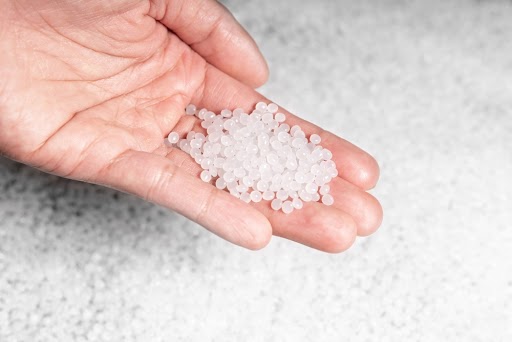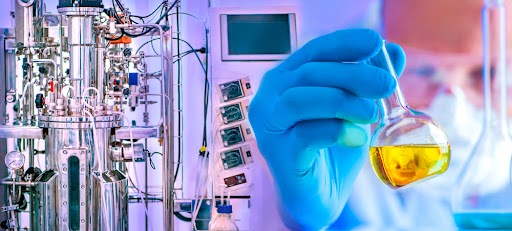
From Polyethylene to Polyester: Influence of Ester Groups on the Physical Properties
The study made by Mark P. F. Pepels. et al. investigates how inserting ester groups into a polyethylene‐type backbone affects the polymer’s physical properties.
The polymers considered are aliphatic long‐chain polyesters (ALCPEs) where ester linkages are placed pseudo‐randomly along a methylene (–CH2–) dominated backbone. By varying the ratio of methylene units to ester groups (M/E), from very large (nearly pure polyethylene) down to lower values (more frequent esters), the authors explore how crystallinity, melting behavior, and thermal stability change.
They obtained their polyesters by ring‐opening metathesis copolymerization of ambrettolide and cis‐cyclooctene followed by exhaustive hydrogenation, which gave saturated polyesters with M/E ratios of ≈15 to ≈223, as well as a pure polyethylene case (M/E =∞)
Melting temperature (Tₘ) decreases systematically as the ester fraction increases (i.e. as M/E decreases). For pure polyethylene (M/E = ∞), Tₘ ≈ 132.1 °C; for M/E = 15, Tₘ drops to ~91.5 °C.
Crystallinity and unit cell structure (orthorhombic) remain largely unchanged across the range of ester content. So, despite more ester linkages, the polymers still crystallize in a similar lattice as that of polyethylene.
Lamellar thickness decreases with more ester content. However, this decrease only partially accounts for the drop in melting temperature.
By gradually converting polyethylene (pure methylene backbone) into polyester (incorporating ester groups), the material retains much of polyethylene’s crystallinity and structure, but its thermal properties are tuned downward. The findings show how chemical modification via ester insertion allows one to modulate melting behavior without completely destroying the crystalline lattice. This has implications for designing polyesters with tailored melting points, possibly for applications needing lower melting temperatures but still some of the structural/physical benefits of polyethylene.
(1) Pepels, M. P. F.; Hansen, M. R.; Goossens, H.; Duchateau, R. From Polyethylene to Polyester: Influence of Ester Groups on the Physical Properties. Macromolecules 2013, 46 (19), 7668–7677. https://doi.org/10.1021/ma401403x.
Author: CNRS
Links
https://pubs.acs.org/doi/10.1021/ma401403x
Keywords
Horizon Europe, ALPEs, PE-like, thermal properties, crystallinity


